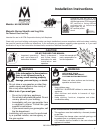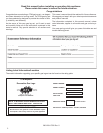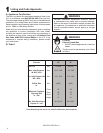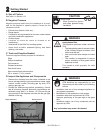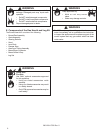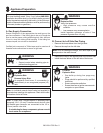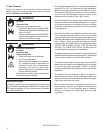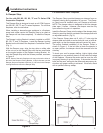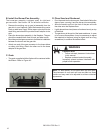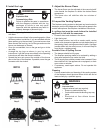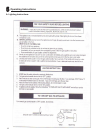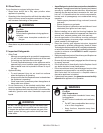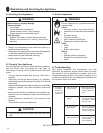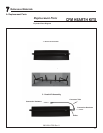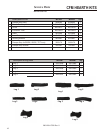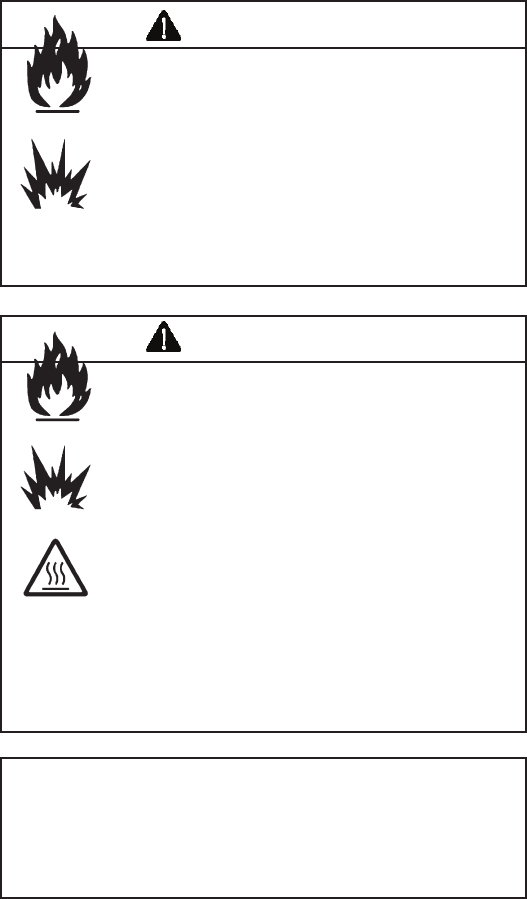
20012914 7/05 Rev. 0
8
C. Gas Pressure
Proper input pressures are required for optimum appliance
performance. Gas line sizing requirements need to be made
following NFPA54 and CSA B-149..
Fire Risk
Explosion Risk
High pressure will damage valve.
• Disconnect gas supply piping BEFORE
pressure testing gas line at test pressures
above 1/2 psig.
• Close the manual shutoff valve BEFORE
pressure testing gas line at test pressures
equal to or less than 1/2 psig.
WARNING
High Altitude Derate
In the USA, input BTU shall be derated 4% (one orice size)
per 1000 feet for altitudes above 2000 feet. In Canada, input
BTU shall be derated 10% (two orice sizes) at altitudes
from 2000-4500 feet.
• Gas Supply Pressure: Minimum inlet gas supply pressure
must be 3.5 in. W.C. for the purpose of input adjustment.
Maximum inlet gas pressure must not exceed 10.0 in. W.C.
The gas line supplying the appliance must be sufcient
size to furnish the appropriate supply pressure to the
appliance while operating in the “High” setting.
• Gas Line Pressure Test: Perform pressure test according
to state and local code (if pressure exceeds 1/2 in. psi [3.5
kPa]) before appliance is connected. Be sure to release
air pressure from the gas line before connection is made
to the appliance.
• Gas Leak Test: Make sure the gas connections are tight.
Turn on the gas and coat each joint with a non-corrosive
gas leak check solution. Always check for gas leaks with a
mild soap and water solution applied with a brush no larger
than 1” (25mm). Never apply soap and water solution with
a spray bottle. Air bubbles will form indicating any leaks.
DO NOT USE A FLAME OR ANY TYPE OF IGNITION
SOURCE TO CHECK FOR LEAKS. All leaks must be
corrected before proceeding with installation.
• The appliance must only be installed in a solid-fuel burning
replace with the ue damper clamped open. The replace
must be constructed of non-combustible material.
• The minimum permanent free opening (in square inches)
that must be provided by the replace chimney or damper
to vent the ue gases is provided in Table 1. If the free
opening is smaller than the specied area, do not use this
appliance.
• The damper must be removed or xed in a manner in
which will secure it open. Some jurisdictions require the
damper to be removed or permanently welded fully open.
Check with state and local codes.
• Be sure that the chimney is completely unobstructed to
ensure proper ventilation of ue gases including carbon
monoxide (CO). CO (a poisonous gas) is tasteless,
odorless, colorless and undetectable without proper
equipment.
WARNING
CHECK FOR GAS LEAKS
Fire Risk
Explosion Risk
Asphyxiation Risk
• Check all ttings and connections.
• Do not use open ame.
• After the gas line installation is complete,
all connections must be tightened and
checked for leaks with a commercially
available, non-corrosive leak check
solution. Be sure to rinse off all leak check
solution following testing.
Fittings and connections may have loosened
during shipping and handling.



